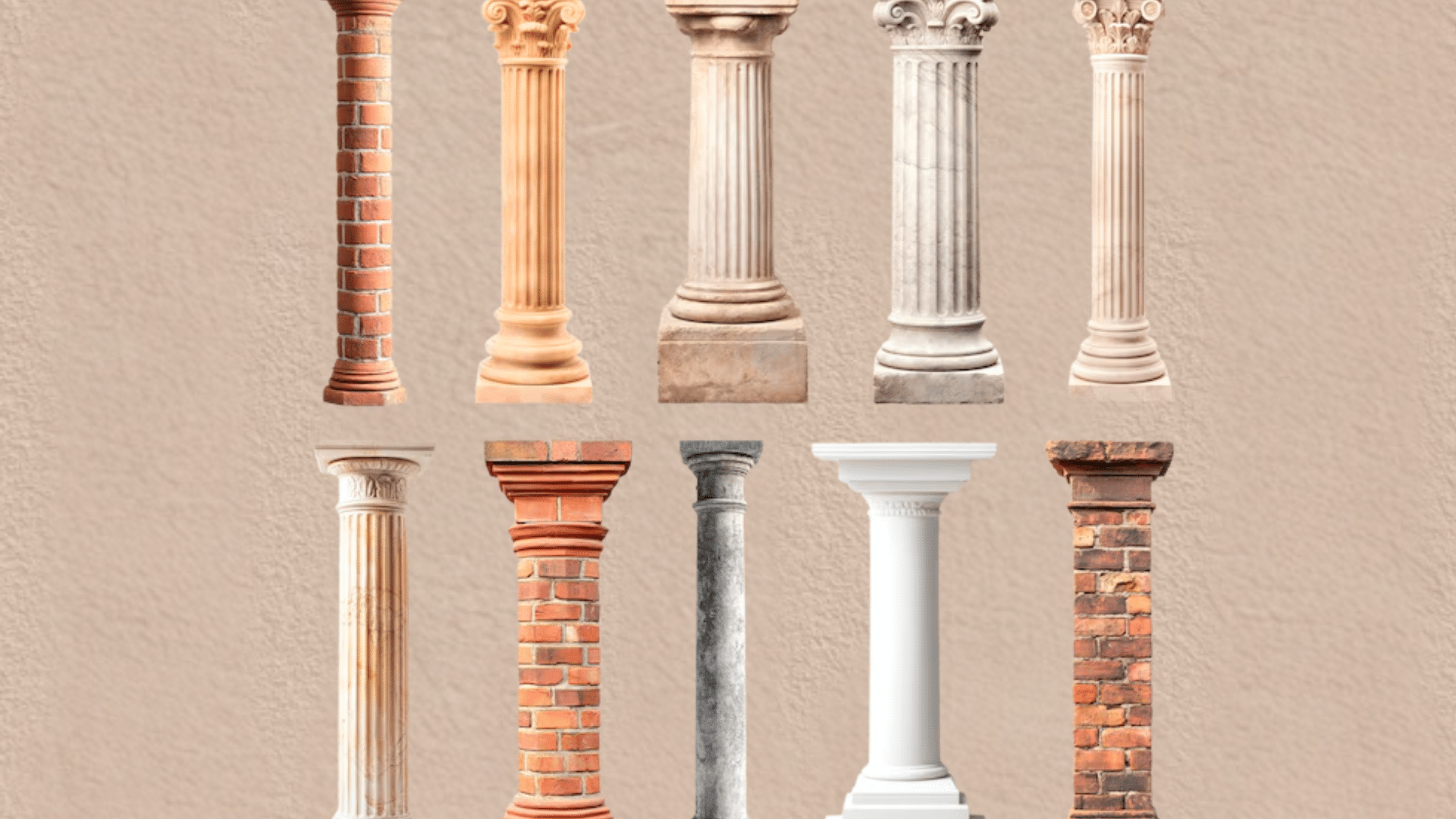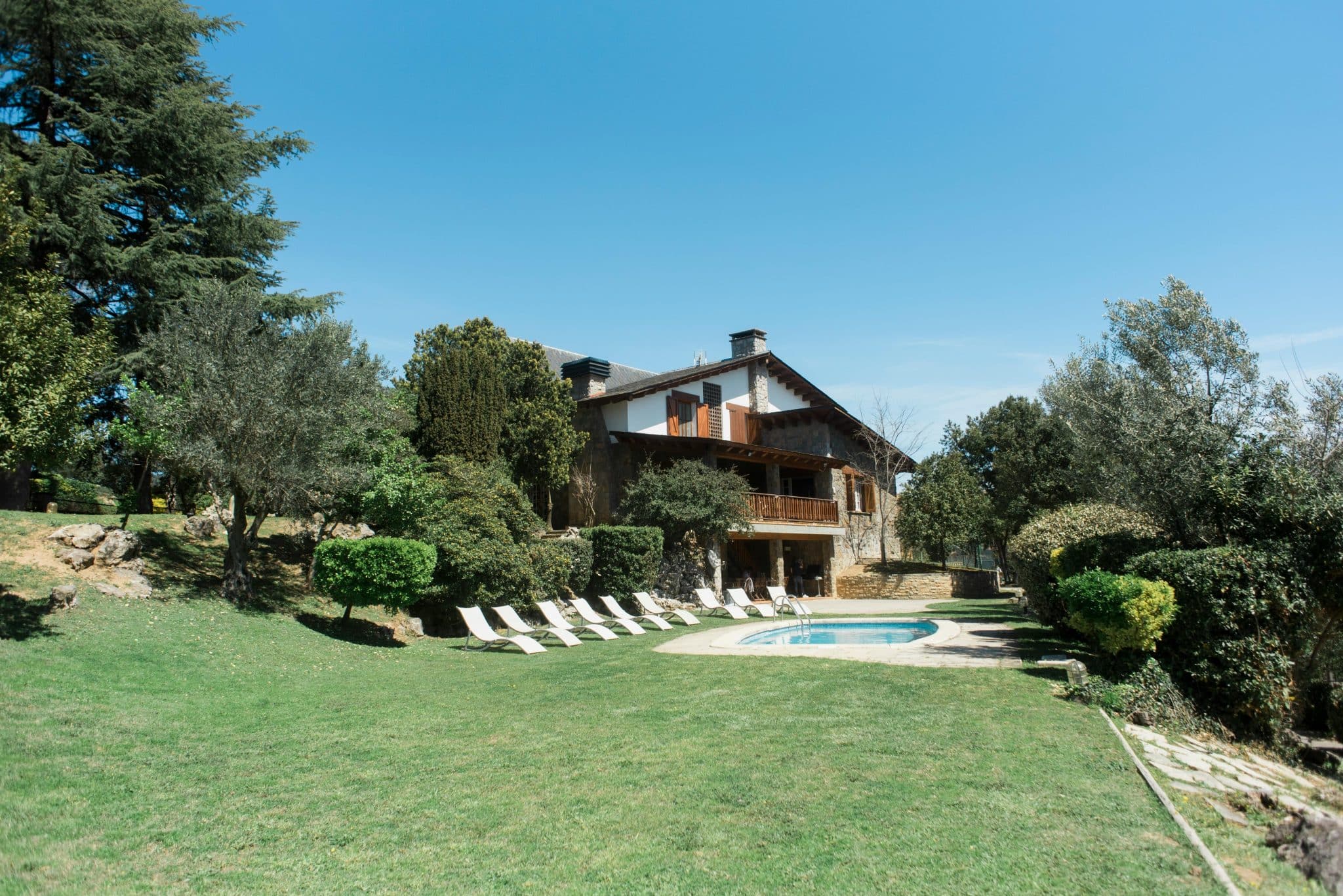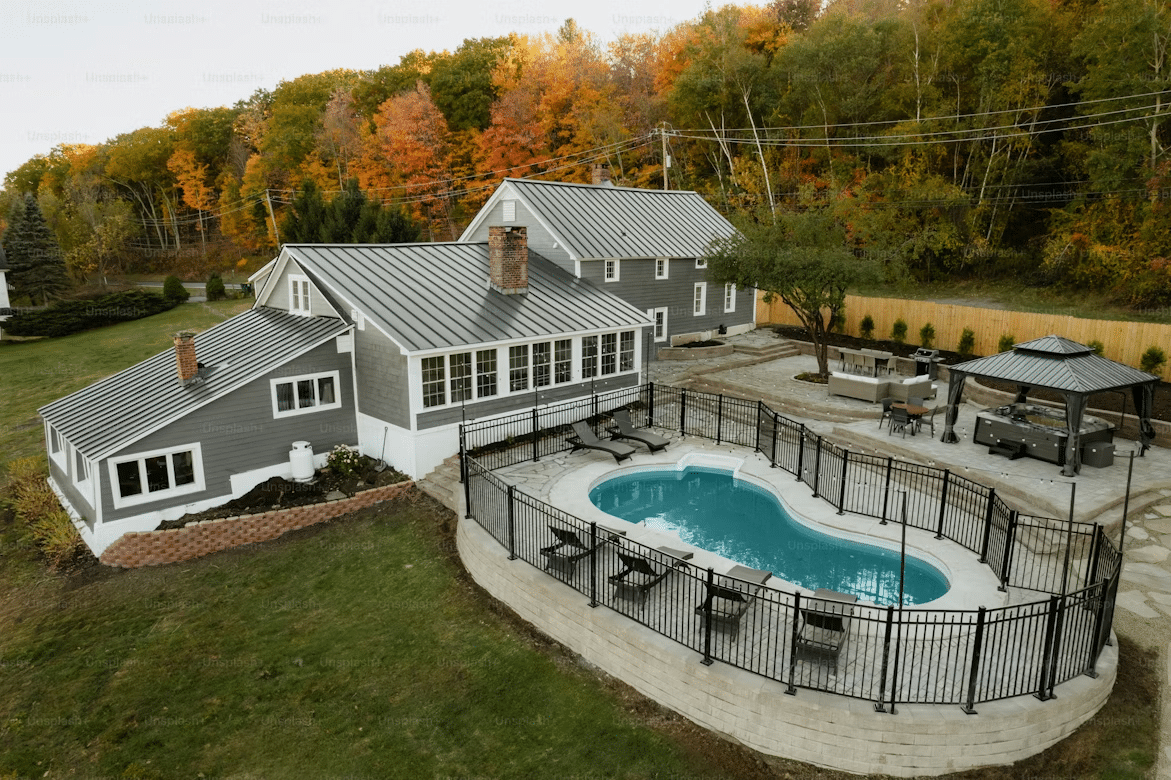Do you find yourself looking at buildings and wondering how they stay upright? Strong columns are often the answer. They hold up roofs, create stunning entrances, and keep structures safe.
I promise to explain the world of column design in clear, simple terms. From ancient Greek styles to modern materials, this guide covers everything you need to know about these crucial building parts.
In this blog, you’ll learn about the five main column types, the math that keeps them standing, and the materials that make them work. I’ll walk you through how columns support both inside and outside spaces and why their design matters so much.
Let’s look at what makes a good column and how they’ve shaped buildings throughout history.
Why Are Columns Crucial for Stability and Aesthetic Appeal?
Columns serve as key structural parts in buildings. They hold up loads from above and move this weight down to the foundation. You can find them both inside and outside areas of structures.
These vertical elements do more than hold things up. They keep buildings stable and safe. Without strong columns, many structures would not stand for long. They form a basic part of how a building stays up.
Beyond their basic job of support, columns add beauty to spaces. They can be plain or fancy, based on the look the builder wants. Many famous buildings are known for their special column styles. The look of columns often tells you about when a building was made.
Columns have been used since ancient times. The Greeks and Romans were famous for how they used columns in their buildings. Today, we still use their ideas in modern buildings all over the world.
From Doric to Composite: A Look at Column Types
Dig into the diverse range of column types, from the classic Doric to the elegant Composite, and understand their historical significance, architectural features, and modern applications.
1. Doric Columns
Doric columns have a basic look that is strong in buildings. They have a simple top part called a capital with no frills or extras. These columns often sit right on the floor without a base.
Key Features:
- Plain, round tops with no fancy details
- Sturdy build with thick shafts
- Common in old Greek temples
- No base in Greek versions
2. Ionic Columns
Ionic columns, with their thin form, add a touch of class. The most well-known part is the scrolls at the top, which curl inward like a snail shell. These columns often stand taller than Doric ones.
Key Features:
- Scroll shapes on both sides of the capital
- More slim and tall than Doric types
- Fluted shafts with small grooves
- Often used in public halls and homes
3. Corinthian Columns
Corinthian columns catch the eye with their plant-like tops. The capitals show off carved leaves and tiny scrolls. These are the fanciest of the main column types.
Key Features:
- Carved leaves that look like acanthus plants
- Small scrolls at the four corners
- Used in grand Roman buildings
- Copied in many newer styles
4. Tuscan Columns
Tuscan columns bring the Doric style down to its most basic form. They have smooth shafts with no lines and very plain tops. This style came from the area now known as Italy.
Key Features:
- Smooth, unlined shafts
- Very simple, round tops
- Always built with a base
- Found in many country homes
5. Composite Columns
Composite columns mix two styles into one striking look. They take the scrolls from Ionic tops and the leaves from Corinthian ones. These were the fanciest options for big projects.
Key Features:
- Mix of Ionic scrolls and Corinthian leaves
- Used in large public Roman works
- Common in grand halls and main rooms
- Copied often in 1700s and 1800s buildings
Calculating Strength: The Role of Math in Column Design
1. Slenderness Ratio (λ)
The slenderness ratio tells us how likely a column is to bend when under pressure. It’s found by dividing the column’s effective length by its radius of gyration.
Formula Explained:
- λ = Lₑ / r
- Lₑ stands for effective length
- r means radius of gyration
- Higher numbers show more chance of bending
This number helps builders determine whether a column will stay straight or bend under weight. Columns with high ratios require more careful planning to stay safe.
2. Effective Length Factor (K)
The K factor shows how a column’s ends affect its strength. The way a column is held at each end changes how it might bend under weight.
Important Values:
- K = 0.5: Both ends fixed firmly
- K = 1.0: Both ends can rotate
- K = 2.0: One end fixed, one end free
- Higher K values mean more chance of bending
This factor helps make sure columns can handle the loads they need to carry in real buildings.
3. Euler’s Critical Load (P_cr)
Euler’s formula finds the exact weight that causes a column to bend suddenly. This works best for long, thin columns that don’t crush but instead bend to the side.
Formula Breakdown:
- P_cr = (π² × E × I) / (Lₑ²)
- E means material stiffness
- I shows how mass is spread out
- Lₑ is the effective length
This formula helps builders set safe limits for tall, slim columns in buildings.
4. Johnson’s Parabolic Formula
Johnson’s formula works for shorter columns that might bend or be crushed. It fills the gap where Euler’s formula doesn’t work as well.
Key Points:
- σ_cr = σ_yield – [(σ_yield²) / (2 × π² × E)] × (L / r)²
- σ_yield means crushing strength
- Works for medium-length columns
- Bridges the gap between crushing and bending
This formula helps make sure both short and medium columns are built strong enough for their jobs.
Choosing the Right Material for Your Column Design
- Stone—Stone columns, made from marble, granite, or limestone, offer lasting strength and classic beauty that has endured centuries of architectural history.
- Wood – Wood columns bring natural warmth and can be shaped into many styles, making them perfect for home interiors where both look and function matter.
- Steel –Steel columns provide exceptional strength with thin profiles, allowing modern buildings to reach great heights while using less space for structural supports.
- Concrete – Concrete columns can be cast in any shape, offer great value, and work well in almost any setting, from home porches to massive skyscrapers.
- Fiberglass – Fiberglass columns resist weather damage without needing much care, making them smart choices for outdoor use where looks matter but maintenance should be minimal.
Design Codes and Standards Every Column Designer Must Know
| REGION | CODE | DESCRIPTION |
|---|---|---|
| USA | ACI 318 | Building Code Requirements for Structural Concrete |
| USA | AISC 360 | Specification for Structural Steel Buildings |
| Europe | Eurocode 2 (EN 1992) | Design of Concrete Structures |
| Europe | Eurocode 3 (EN 1993) | Design of Steel Structures |
| Canada | National Building Code of Canada (NBCC) | National Building Code of Canada for construction safety and structural requirements |
| Australia | AS 3600 | Concrete Structures Design Standard |
| Australia | AS 4100 | Steel Structures Design Standard |
Conclusion
Columns hold up more than just buildings—they support the very history of architecture itself. Through this blog, I’ve shown how different types, materials, and math principles work together to create these vital structures.
What makes columns so important? They blend strength with style in a way few other building elements can match. Whether you’re looking at simple Doric designs or ornate Corinthian carvings, each has its purpose and place.
The next time you see columns in a building, take a moment to notice their style and material.
Are they wood, stone, or modern steel? Their design tells a story about when and why they were built.
Frequently Asked Questions
1. How Long Have Columns Been Used in Buildings?
Columns have been key parts of buildings for over 2,500 years, with some of the first well-known examples found in ancient Egyptian and Greek structures.
2. Can I Add Columns to My Existing Home?
Yes, you can add columns to your home as both functional supports and visual features, but you’ll need to check with a structural expert first.
3. What’s the Long-Lasting Material for Outdoor Columns?
Stone and concrete last the longest outdoors, and proper stone columns can stand for hundreds of years with minimal care.
4. How Do I Know Which Column Style Fits My Home’s Look?
Match your column style to your home’s period and look—Tuscan and Doric for simpler homes, Ionic and Corinthian for more formal or fancy styles.













